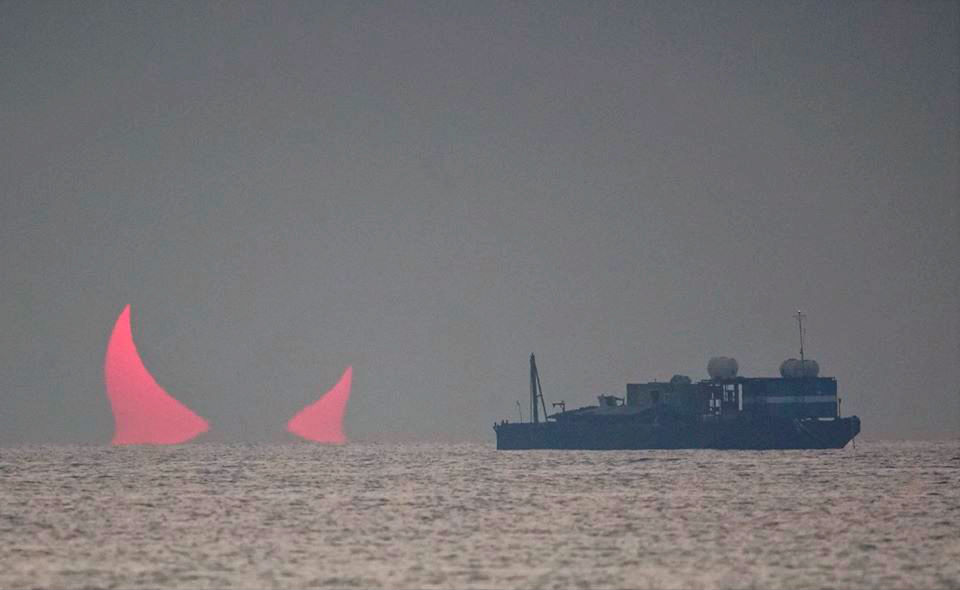NASA on Thursday shared an incredible on its website Astronomy Picture of the Day (APOD), which showed a picture of an unusual sunrise over Qatar. The picture went viral on social media for its uncanny resemblance to a pair of red devil horns. Photographer and amateur astronomer Elias Chasiotis had snapped the picture, who initially posted the image to his Facebook page.
Describing the red crescent sunrise as the most awesome sunrise he had ever seen, Chasiotis shared a few more pictures of the eclipse over Persian gulf. He wrote, "A quick last minute's visit to Qatar for the annular eclipse of the sun of 26 December 2019. The annular phase was blocked by clouds, but the red crescent sunrise was the most awesome sunrise I've ever seen!"
The photographer, who loves to click pictures of eclipses, explained that he was on vacation in Al Wakrah, Qatar specifically to catch the celestial event that occurred on December 26.
NASA named the image 'A Distorted Sunrise Eclipse' while posting it on its website-- apod.nasa.gov and explained the phenomenon behind the image as Etruscan Vase effect, in which warm air in the atmosphere bends light to create an inferior mirage.
While sharing the picture the scientist Robert Nemiroff explained the phenomenon that why the sun appeared to rise in two pieces and during partial eclipse after initial cloudiness. "The dark circle near the top of the atmospherically-reddened Sun is the Moon -- but so is the dark peak just below it. This is because, along the way, the Earth's atmosphere had an inversion layer of unusually warm air which acted as a gigantic lens and created a second image."
"For a normal sunrise or sunset, this rare phenomenon of atmospheric optics is known as the Etruscan vase effect," his statement read.
Photographer Chasiotis has been observing solar and lunar eclipses since he was a teenager. He flew from Athens to Qatar to catch the eclipse rising from the sea during December 26, 2019, annular solar eclipse.
The next annular solar eclipse will be visible on June 21 across eastern Africa and southern Asia. While a total solar eclipse will be visible in the southern tip of Chile and Argentina on December 14.
ALSO READ | Eastern India to witness first total lunar eclipse today
ALSO READ | Supermoon eclipse on Sunday, next will be in 2033

